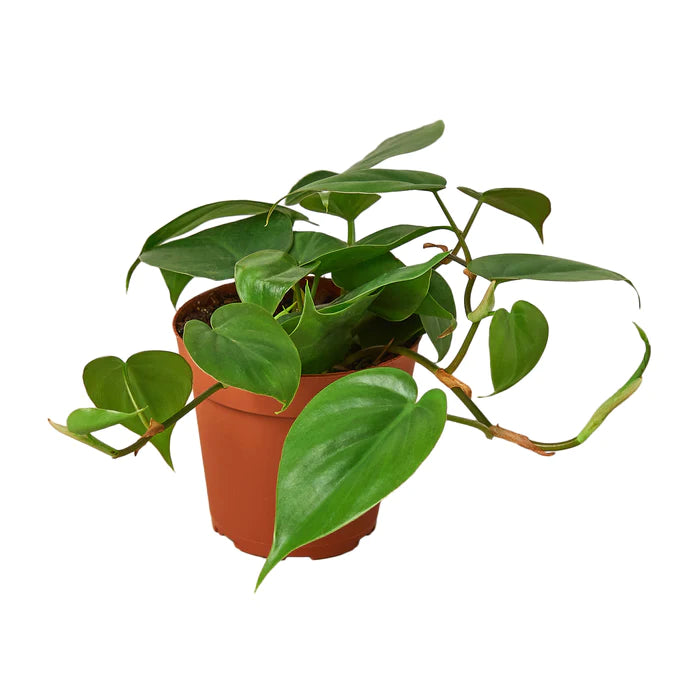Philodendron Cordatum Heartleaf
Couldn't load pickup availability
Philodendron cordatum, commonly known as the Heartleaf Philodendron, is a beloved and classic houseplant appreciated for its heart-shaped, vibrant green leaves and trailing growth habit. This versatile and easy-to-care-for plant can adapt to a wide range of indoor conditions, making it ideal for both novice gardeners and seasoned plant enthusiasts. Its ability to purify the air and its fast-growing nature add to its popularity as an indoor plant.
🌿 Botanical Name: Philodendron cordatum
💧 Care Level: Easy. The Heartleaf Philodendron is renowned for its adaptability and minimal care requirements, thriving in a variety of indoor environments.
📏 Size: Vines can grow several feet in length, making this plant perfect for hanging baskets or as a climbing plant when provided with a support structure.
☀️ Light: Prefers bright, indirect light but can tolerate low light conditions quite well. Direct sunlight should be avoided, as it can scorch the leaves.
💧 Water: Water when the top inch of soil has dried out. Heartleaf Philodendron prefers evenly moist soil but is quite forgiving if you occasionally underwater. Overwatering can lead to root rot, so ensure good drainage.
💦 Humidity: Thrives in moderate to high humidity but is very adaptable and can thrive in the lower humidity levels typically found in homes. If the air is very dry, consider using a humidifier or placing the plant on a pebble tray.
🌡️ Temperature: Prefers average room temperatures between 65°F to 80°F (18°C to 27°C). Protect it from drafts and avoid exposure to temperatures below 50°F (10°C).
🌱 Soil: Use a well-draining, peat-based potting mix. Incorporating perlite or vermiculite can improve drainage and aeration.
🌱 Fertilizing: Fertilize every 4-6 weeks during the growing season (spring and summer) with a balanced, water-soluble fertilizer, diluted to half the recommended strength. Reduce fertilization during the fall and winter.
🔄 Pruning: Pruning is not typically necessary for health but can be done to control the plant's shape and size or to encourage bushier growth. Trimming back leggy vines can stimulate new growth.
🍃 Pests and Diseases: Keep an eye out for common pests such as spider mites, mealybugs, and aphids. Proper care and regular inspections can help prevent most pest and disease issues. Overwatering can lead to root rot, so be cautious with your watering schedule.
Propagation: Easily propagated through stem cuttings placed in water or soil. Cut a section of stem with at least one node (the small bump where leaves emerge), and place it in water or moist potting mix. Roots should begin to form within a few weeks.



Philodendron Cordatum Heartleaf


